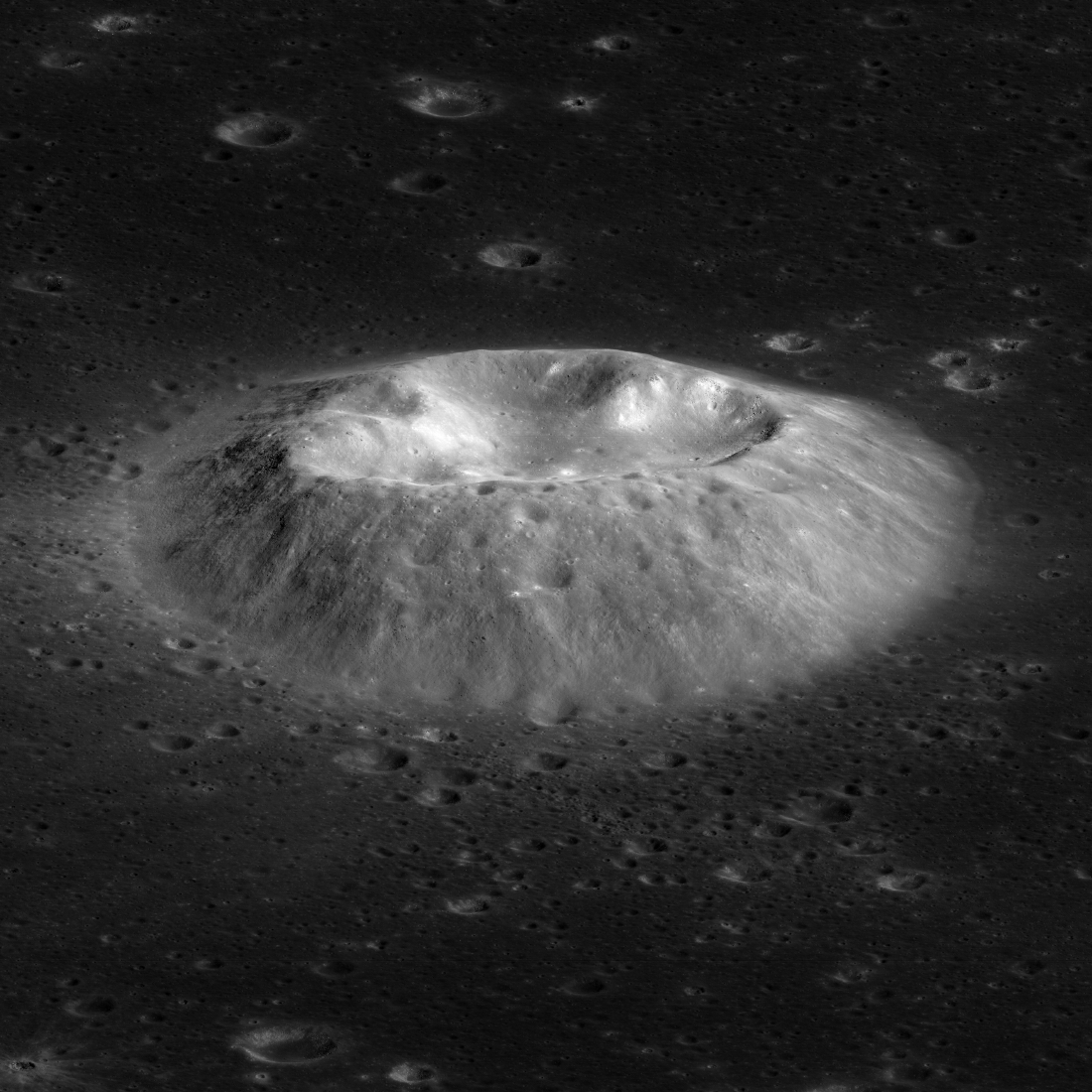
The Mairan T dome is a large silicic volcanic structure with a pronounced summit depression. Remote sensing indicates that the composition of the volcanic material (lava) making up the dome is enriched in silica (SiO2). This rock type would be classified as either rhyolite or dacite on Earth, and the composition starkly contrasts with the dark, iron-rich mare basalts that embay the Mairan T dome. Most of the volcanism on the Moon is basaltic or iron-rich. Still, silicic volcanism also occurred on the Moon. Indeed, bits and pieces of similar materials were found in the Apollo samples; however, all are small fragments delivered to the Apollo sites as material ejected from distant impact events. One of the great questions for lunar science is how the silicic materials formed. On Earth, specific tectonic settings and higher water contents in the rocks favor the formation of such lavas; however, the Moon lacks plate tectonics and water-rich sediments. NASA is planning a Commercial Lunar Payload Services (CLPS) lander mission to another, larger silicic volcano, one of the Gruithuisen domes, to address this question.
The Mairan T dome formed before the emplacement of the surrounding mare basalts. The large central depression represents the collapse of the central vent during the final stages of eruption. The volcano may also have spewed material - ash and dust - over the surrounding plains, but evidence of such erupted materials, known as pyroclastic deposits, would have been long since covered over by the basaltic lavas. Since then, continued degradation of the steep slopes of the cone by small impact events has spread silicic materials out onto the nearby basaltic plains. Explore this magnificent oblique view and see if you can find evidence for this late-stage mass wasting.
Related Featured Images
Gruithuisen Domes: A Lunar Mystery
Gruithuisen Domes – Constellation Region of Interest
New Views of the Gruithuisen Domes
Published by Mark Robinson on 11 October 2022